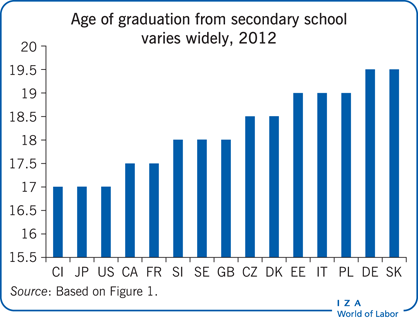Elevator pitch
The main goal of secondary school education in developed countries is to prepare students for higher education and the labor market. That demands high investments in study duration and specialized fields to meet rising skill requirements. However, these demands for more education are in opposition to calls for early entry to the labor market, to lengthen working lives to meet the rising costs associated with an aging population and to enable the intergenerational transfer of skills. One way to lengthen working lives is to shorten the duration of secondary school, an option recently implemented in Canada and Germany. The empirical evidence shows mixed effects.

Key findings
Pros
Shortening the duration of secondary school can make tax and social security systems more sustainable by lengthening people’s time in the workforce.
Shortening secondary school does not affect the probability of a student enrolling in college.
The effects of reforming secondary school duration on achievement in higher education are small and do not apply to all fields of study.
There is no evidence that reforming secondary school duration leads to an increase in the probability of dropping out of college or to lower enrollment in a university program.
Cons
Shortening secondary school reduces mathematics achievement in secondary school, indicating some limits on the ability of young people to accelerate the accumulation of knowledge.
Shortening secondary school increases the likelihood that female students will delay college enrollment and decreases the likelihood that they will study science, technology, engineering, or mathematics.
Small negative effects on students’ personality development due to compression of the secondary school curricula may have a minor effect on later labor market outcomes.